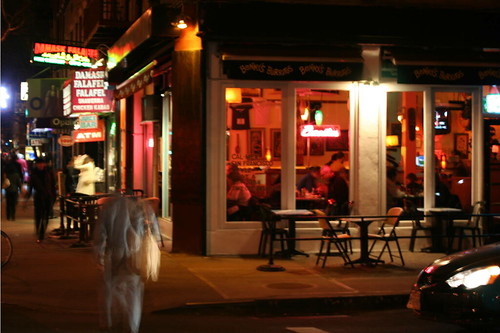Living Through a lens, again.

Once upon a time, I worked as a photographer. I found it easy to see the world through a lens, easier ( not easy ) to see a war through a lens, easy to see my life in terms of a series of images through the piece of metal attached to my right hand by a strap at all times. I thought these images could bring folks an understanding of the world, help folks to see the problems I say ( Children of War, Belfast Photographs, 1977 ) But, I realized, first, that folks were living a reality of images, and no photograph or writing could change the way folks saw things, so I decided to present images of peace, finding peace, and moved on to photograph the peaceful west coast of Ireland... then I found I was living through my camera lens... and wanted to live real life.
Real life sucks.
Real life sucks, especially in a world that is increasingly about image. To try and be real in a world of images... the Quaker guru who can't bring himself to make peace, the President who talks of terrorism while committing mass murder, folks who proclaim the search for truth while worshiping a mythical fairy tale godman at the expense of the reality of their complicity in the objectification of the tribe of that man, as existing only to bring about their mythical godman's world of false light... the friends who speak of love while breaking every bond of love and friendship... so... to be truthful???
Out comes the camera. Why pretend that it is sane to be sane in a world of insanity, to look for reality in a phony world of false images... dive in, boyo, live through the lens again, who needs reality?
from Jean Baudrillard, Selected Writings, ed. Mark Poster (Stanford; Stanford University Press, 1988), pp.166-184. Found also at: http://www.stanford.edu/dept/HPS/Baudrillard/Baudrillard_Simulacra.html
If we were able to take as the finest allegory of simulation the Borges tale where the cartographers of the Empire draw up a map so detailed that it ends up exactly covering the territory (but where, with the decline of the Empire this map becomes frayed and finally ruined, a few shreds still discernible in the deserts - the metaphysical beauty of this ruined abstraction, bearing witness to an imperial pride and rotting like a carcass, returning to the substance of the soil, rather as an aging double ends up being confused with the real thing), this fable would then have come full circle for us, and now has nothing but the discrete charm of second-order simulacra.l
1 Counterfeit and reproduction imply always an anguish, a disquieting foreignness: the uneasiness before the photograph, considered like a witch's trick - and more generally before any technical apparatus, which is always an apparatus of reproduction, is related by Benjamin to the uneasiness before the mirror-image. There is already sorcery at work in the mirror. But how much more so when this image can be detached from the mirror and be transported, stocked, reproduced at will (cf. The Student of Prague, where the devil detaches the image of the student from the mirror and harrasses him to death by the intermediary of this image). All reproduction implies therefore a kind of black magic, from the fact of being seduced by one's own image in the water, like Narcissus, to being haunted by the double and, who knows, to the mortal turning back of this vast technical apparatus secreted today by man as his own image (the narcissistic mirage of technique, McLuhan) and that returns to him, cancelled and distorted -endless reproduction of himself and his power to the limits of the world. Reproduction is diabolical in its very essence; it makes something fundamental vacillate. This has hardly changed for us: simulation (that we describe here as the operation of the code) is still and always the place of a gigantic enterprise of manipulation, of control and of death, just like the imitative object (primitive statuette, image of photo) always had as objective an operation of black image.


2 Comments:
Sure there are headless ghosts wandering around New York... I pushed the button, there it is... proof... photographs don't lie...
:)
well I'll be....
Post a Comment
<< Home